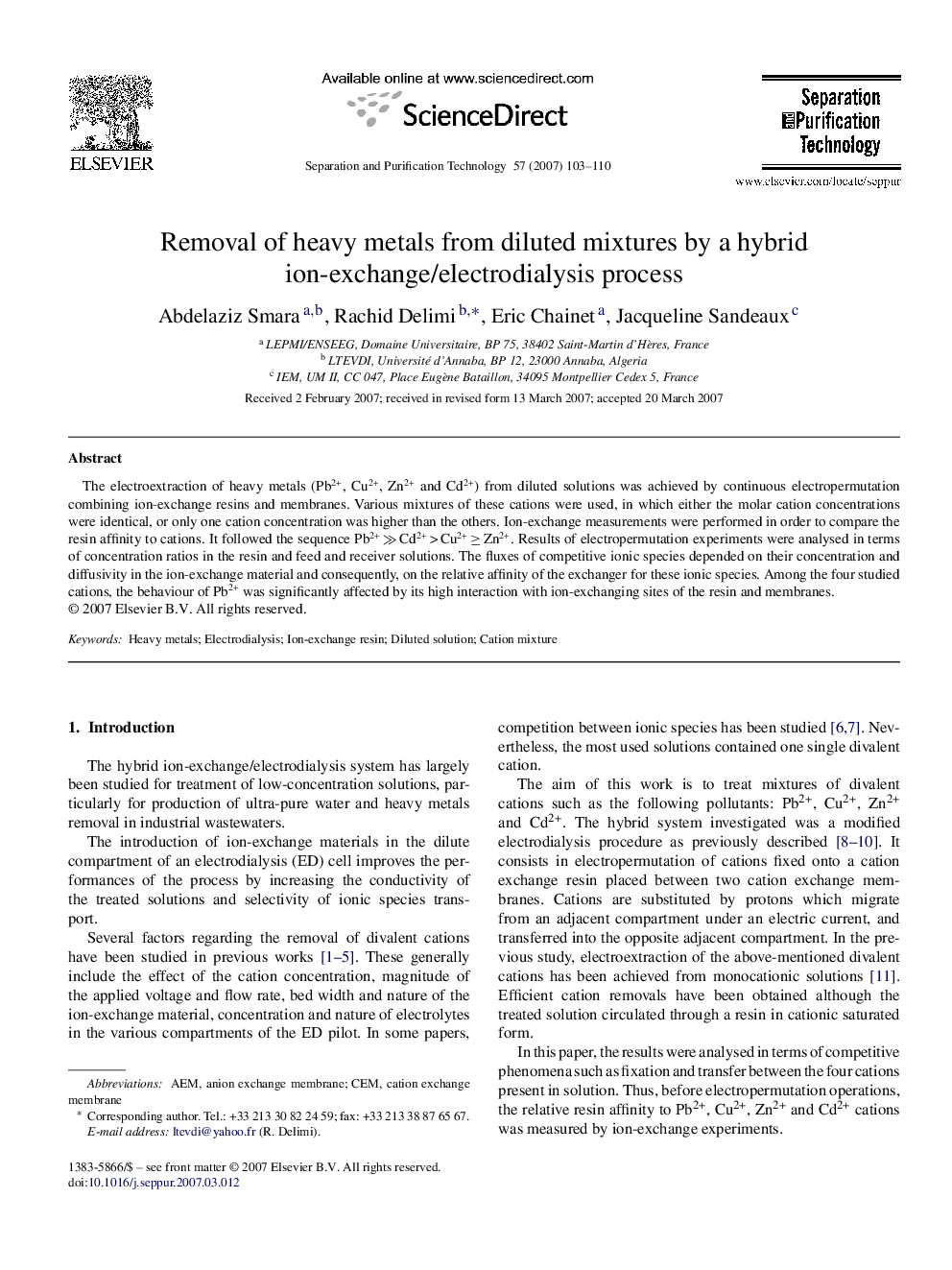| Article ID | Journal | Published Year | Pages | File Type |
|---|---|---|---|---|
| 643908 | Separation and Purification Technology | 2007 | 8 Pages |
The electroextraction of heavy metals (Pb2+, Cu2+, Zn2+ and Cd2+) from diluted solutions was achieved by continuous electropermutation combining ion-exchange resins and membranes. Various mixtures of these cations were used, in which either the molar cation concentrations were identical, or only one cation concentration was higher than the others. Ion-exchange measurements were performed in order to compare the resin affinity to cations. It followed the sequence Pb2+ ≫ Cd2+ > Cu2+ ≥ Zn2+. Results of electropermutation experiments were analysed in terms of concentration ratios in the resin and feed and receiver solutions. The fluxes of competitive ionic species depended on their concentration and diffusivity in the ion-exchange material and consequently, on the relative affinity of the exchanger for these ionic species. Among the four studied cations, the behaviour of Pb2+ was significantly affected by its high interaction with ion-exchanging sites of the resin and membranes.
